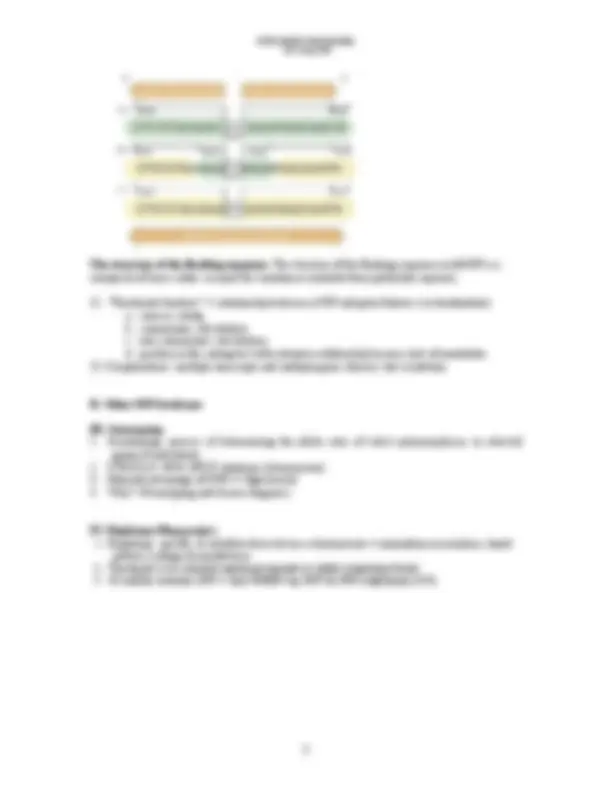2/9/2006
Lecture 9: Polymorphism
I. Introduction
1. Polymorphism: The occurrence in a population (or among populations) of several phenotypic
forms associated with alleles of one gene or homologs of one chromosome
2. Genetic Polymorphism: The occurrence together in the same population of more than one
allele or genetic marker at the same locus with the least frequent allele or marker occurring
more frequently than can be accounted for by mutation alone.
3. Allele: Alternative form of a gene. One of the different forms of a gene that can exist at a
single locus; One of the different forms of a gene or DNA sequence that can exist at a
single locus. Alternatively, one of several alternate forms of a gene occupying a particular
location on a chromosome.
4. Cause of polymorphism: mutation
5. Allele frequency: Often called gene frequency. A measure of how common an allele is in a
population; the proportion of all alleles at one gene locus that are of one specific type in a
population.
6. Operational definition: allele frequency > 1%; otherwise called mutations or rare alleles
7. Further distinction: common polymorphism (alleles), vs. private polymorphism less useful
for this distinction
8. Why are we interested? Why do we care?Identifying the genes conferring susceptibility or
resistance to common human diseases should become increasingly feasible with improved
methods for finding DNA sequence variants on a genome-wide scale (Collins et al. 1997)
9. Types of polymorphisms: SNP 1/1000, STR (short tandem repeats); sequencing project =
SSLP (simple/single sequence length polymorphism)- human mouse & rat genotyping,
SSR simple sequence repeat-plant genome; microsatellite DNA-evolution
10. Satellite DNA: This term was used originally to describe a discrete fraction of DNA visible in
a CsCl2 density gradient as a "satellite" to the main DNA band. The term now refers to all
simple sequence DNA having a centromeric location, whether distinguishable on density
gradients or not.
11. Microsatellites: A very short unit sequence of DNA (2 to 4 bp) that is repeated multiple times
in tandem. Microsatellites are highly polymorphic and make ideal markers for linkage
analysis. A polymorphism at a microsatellite locus is also referred to as a Simple Sequence
Length Polymorphism (SSLP). Alleles are designated by providing the repeat motif and
the copy number for each allele.
12 Example of an SSLP marker:










